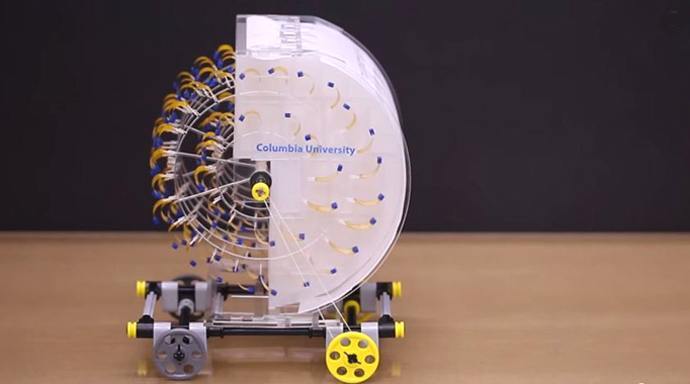Forget about searching for a charging point for a battery-powered Leaf, Tesla or Volt – engineers have built what promises to be every motorist’s dream; an evaporation-driven car that can be filled up at any water tap.

Forget electric cars. Water power is here
The associate professor of biological sciences and physics at Columbia University, Ozgur Sahin, used bacterial spores that shrink and swell when exposed to water to power a light and move objects, including a nanoscale model of a car.
The bacterial spores are embedded in a flexible tape. Changes in humidity cause the tape to twitch like an artificial muscle. The first test bed for the technology saw the tape used to open and close a series of shutters. Water poured into a tray below causes the air within a container to become humid, which causes the tape to open a series of shutters. When the humid air is released, the bacterial spores contract and the shutters close. The process continues until the supply of water runs out.
The second generation prototype was used to drive a small model of a car.
Sahin believes it will be be possible to build evaporation-driven piston engines big enough to power full-size cars. A huge version built off-shore could generate sustainable energy that relied only on a steady supply of sea water. More information about the water-powered car at nature.com
Breakdown cover including £500 towards repairs
As well as being 100% carbon neutral, breakdown cover from the ETA offers an unparallelled level of service. Every breakdown customer receives free Auto Repair cover worth £65. This covers you up to £500 against the costs of repairs following a breakdown. No other breakdown cover provides this level of reassurance, which we believe should come as standard. Get a quote
 Established over 24 years ago, and with over 5,000 recovery trucks on call 24/7, we have a proven track record of providing efficient, reliable breakdown cover.
Established over 24 years ago, and with over 5,000 recovery trucks on call 24/7, we have a proven track record of providing efficient, reliable breakdown cover.
We handpick only the best local mechanics and garages around Britain to send out if you break down. We believe this way of working is efficient, environmentally friendly and helps supports local communities and economies, too.
On top of this, we offset the carbon emissions of the recovery trucks that go out to assist you, reducing the impact your breakdown has on our environment. Every breakdown policy you buy helps fund the work of our charity, the ETA Trust, which we set up in 1994 to campaign for a safer, cleaner transport future.
Anthony
In – liquid water. Out – water vapour. So more energy out than in. Sounds more like a braking system than propulsion.
john mallows
Spot on Anthony. Iinitially sceptical, so gave the papers a speed read. Nothing to dispel my view that the actual source of energy is not the evaporation (in fact evaporation aborbs energy, anyone heard of latent heat of evaporation??) but comes from whatever energy source it is that causes the evaporation. e.g. sunlight (or ‘worse’ an electric heater, or ‘worse still’ a petrol burning heater!!). So at best we have an example of solar power, where this biological phenomenon is used as the conversion device. The issue, for us, then is whether or not it is more efficient at the conversion than, say, a PV cell. Beware any pedlar of this kind of stuff; if not you might find yourself buying a ‘perpetual motion’ machine – and serve you right. Meanwhile I’ll stay faithful to the second law of thermodynamics. (PS. notice on the author list there’s only one physicist in a gaggle of biologists – wonder how the nobbled him).